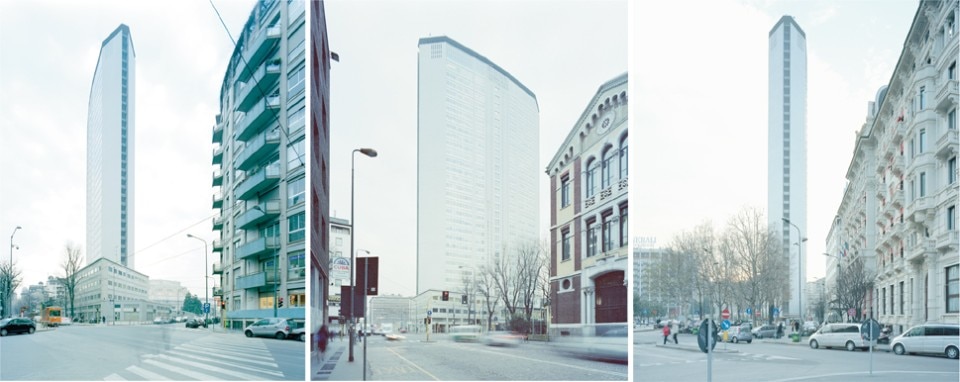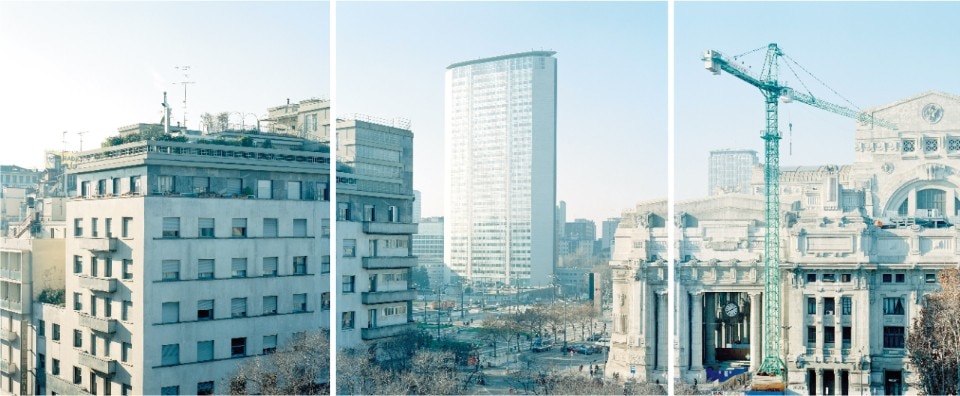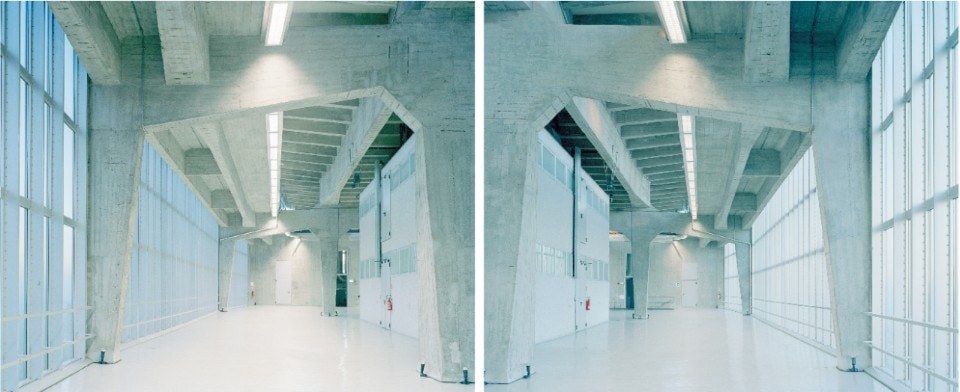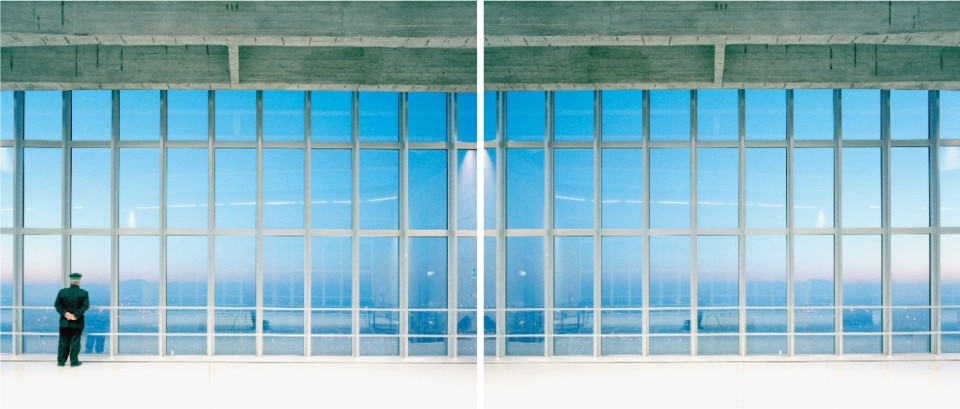BILDRAUM 28/2007 © Walter Niedermayr
Courtesy of Galleria Suzy Shammah Milano e Galerie Nordenhake Berlin/Stockholm.
Originally Published on Domus Gio Ponti / 2008
Here the question is resolved in the best of ways with a suitably realistic appro- ach, but also great philological rigour. The building was already in need of repair, having been subjected to extemporary maintenance or interior functional alterations in its near- ly 50 years of existence, but never to a comprehensive restoration.Then, on April 18, 2002, a light aircraft crashed into its twenty-sixth floor, killing two young women and destroying two whole storeys.The terrible shock waves also caused notable damage to other floors and jeopardised the safety of some of the skyscraper’s bearing structures.
To restore the architecture to its original functionality and symbo- lic, institutional but above all artistic meaning, regional president Roberto Formigoni was appointed government commissioner by the Ministry of the Interior. A technical advisory commission was then set up to decide how the operation would be carried out.
The restoration of modern and contemporary architecture is a subject that has only recently been tackled methodologically.Twenty years or so ago, the topic had hardly even been raised. In the 1980s the Milan arts council felt the necessity to extend its active protection to many works of modern architecture that had been left in a state of structural, typological and functional disrepair, amid almost general indifference.The council launched a campaign which eventually listed numerous buildings. Among these we should mention at least the most important for the cri- tical significance and importance of their architects: the Casa del Fascio and the Novocomum by Giuseppe Terragni, the Casa nel villaggio dei gior- nalisti by Luigi Figini, the Triennale Building by Giovanni Muzio, the Casa Albergo by Luigi Moretti, the Istituto Marchiondi by Vittoriano Viganò, and the Torre nel Parco by Cesare Chiodi and Gio Ponti.
In that same period Gio Ponti’s family, anxious to protect the Pirelli skyscraper properly, lodged a petition with the arts council. Since the buil- ding was less than 50 years old and some of the architects involved in its construction were still alive – conditions which did not allow application of the law on protection of monuments – it proposed a restraint on the protection of copyright which was emanated with a ministerial decree dated April 22, 1995.
This widespread drive for preservation also raised issues regarding the restoration of modern buildings. Compared to ancient or historical architec- ture built with traditional techniques and materials, such buildings certainly raise specific issues that are sometimes more difficult to resolve.
In some restorations the “materialistic” view of architecture tends to favour the original material as the unique record of a palimpsest that is indeed the architectural organism. Albeit unimpeachable as a cultural attitude, it sometimes neglects other specific aspects of the architecture such as function, space, volume, and the relations between parts. In the case of the Pirelli tower, the project, led by the scientific advisory commission and drafted by the architecture firms Renato Sarno and Corvino-Multari, showed respect for the conservation requests. It was tac- kled in its concreteness with the aim of conserving the original elements, but also a full functional recovery and reinstatement of the skyscraper’s symbolic value.
While the interior of the building had over the years undergone several maintenance operations and modifications, the outer shell had never been touched. Almost all its metal window frames were thus in disrepair. Large portions of its cladding tiles had become detached, and it had even become necessary to cover them with wire netting to prevent material falling off.
The operation was particularly innovative, since it followed no consolidated practice. It was preceded by a thorough diagnostic phase in the workshop and in situ, so as to understand the reasons for the building’s deteriora- tion and the characteristics of the materials to be repaired.
Its curtain wall facade turned out to be solidly anchored to its support structures, whereas the alumi- nium frames were suffering from extensive and uneven oxidisation and poor tightness. Air and water had there- fore infiltrated.
The operation on the 10,000 square metres of continuous facade was treated as a strictly conservational restoration. The elements were completely dismantled. The aluminium was cleansed of impurities, brushed, poli- shed and re-anodised.The original frames thus renovated were then optimised with the installation of silicone gaskets and perforation so as to allow water to be discharged and to avoid stagnation.
The original glazing consisted of two four-millime- tre sheets divided by a cavity, a sort of vetro-chamber.This had been technically advanced for its time, but is unsati- sfactory today. So it had to be completely substituted with glass chambers. Inert gas was injected into the cavity to ensure the best thermal insulation.
The remaining part of the facade, covering a surfa- ce of about 12,000 square metres, was clad in vitreous mosaics of 2 x 2 centimetres and 4 millimetres thick, many of which had fallen or were peeling off.To get these tiles firmly back onto the wall support, small holes were drilled and low viscosity epoxy resins injected into them. The wider gaps were integrated with some 250,000 new tes- serae, specially produced in the same dimensions and colour as the originals. Finally, all the leaks were plastered over with “high performance” mortar.
The impact of the plane crash, the explosion of its fuel tanks and consequent shock wave had caused evident deformations in the structures of the 26th and 27th flo- ors. The deformed floor slab therefore had to be reali- gned by jacking it up, while the original capacity of the beams was regained by applying post-stretched external cables and carbon fibres to the intrados.
This experience was not confined to the enuncia- tion of theoretical principles, but confronted concrete, challenging and unusual questions.The result was a paragon of modern restoration, because it respects the original model without betraying Gio Ponti’s vision.
Edited by:
Alberto Artioli
Walter Niedermayr
The artist Walter Niedermayr, born in Bolzano, Italy, in 1952, has captured international attention with his photographs of high-mountain landscapes. Characteristic of his photographic composition is the “second look”, which he turns into a central theme by shifting his shooting location or changing his line of sight, and which he stylises by presenting the motifs as picture sequences of two or more photographs. While his earlier works, published in Die bleichen Berge (1993) and Momentary Resorts (1998), still have a clearly documentary impact, his more recent picture series as can be found in the publications Civil Operations (2003) or Titlis (2004) are noticeably more abstract; in these he was much less explicit in his accentuation
of a geographical location.
However, he showed an interest not just in the natural but also the built environment from very early on. Architecture as a tangible trace left by human beings has always been a component of his work, although initially only in the background or the periphery. In his Bildraum (“image-space”) series on architecture he focuses on Monumente (“monuments”) of recent and current architectural history.
Thus, commissioned by the Japanese magazine X-Knowledge (2004), he realised several sequences about Le Corbusier’s buildings in Paris (Villa Savoye, Villa La Roche-Jeanneret, Villa Planeix and Armée du Salut) and just last year he published a first Architekturmonographie (“architectural monograph”) together with the architects Kazuyo Sejima + Ryue Nishizawa / SANAA on the occasion of their joint double exhibition (deSingel, Antwerp; arc-en-rêve, Bordeaux; aut. architektur und tirol, Innsbruck). What is noticeable about both series is that the buildings are photographed in a very objective manner, while at the same time their soul, “what is pure about modernism”, has been captured.
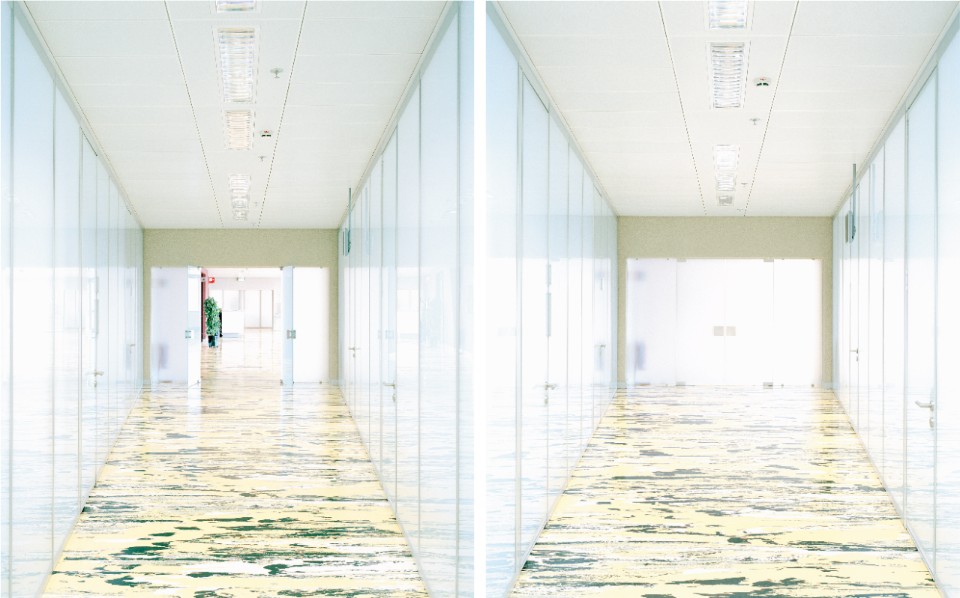
With these precisely chosen locations, the panorama-like cropping, and the duplications in the diptych he does not so much depict the architecture, as rather internalise it in the photographs. Just like a geologist Walter Niedermayr is interested in the object’s tectonic composition, by meticulously exposing its layers and structures. In doing so he transforms what is static and rigid about these buildings into something seemingly unreal and abstract, something ephemeral pervaded by light and lightness.
The Pirelli tower (or “Pirellone”) in Milan, at number 22 Via Fabio Filzi, is yet another project in which the artist chose a building steeped in history. After a construction period of four years, this 127-metre-high, 32-storey edifice, Italy’s first skyscraper, was inaugurated in April 1960 in the place where the former headquarters of the Pirelli Company had once stood. Since then the building, due to the architects’ collectively consisting of Gio Ponti, Pier Luigi Nervi, Antonio Fornaroli, Alberto Rosselli, Giuseppe Valtolina & Egidio Dell’Orto, has been considered an icon of Italian rationalism.
In his reserved but pertinent way of doing things, Walter Niedermayr has succeeded in capturing this building as such, while reconciling two opposing perspectives: the horizontal flight of the imposing Piazza Duca D’Aosta and the vertical aspect of the filigree facade of the ‘Pirellone’.
Other locations were no less strategically chosen in order to reveal this building’s soul: Bildraum 34/2007, for example, highlights the tower’s glass skin in the back light of the evening sun. Even though this photograph in particular shows the least of the actual architecture, it is the one that most succinctly reveals the intention of this architecture: the striving for something higher.
Moritz Küng
Curator at deSingel, an International art campus in Antwerp. In 2008 he curated the exhibition “Kazuyo Sejima + Ryue Nishizawa / SANAA & Walter Niedermayr” at the Gallery aut. architektur und tirol, Innsbruck.
Who is Walter Niedermayr
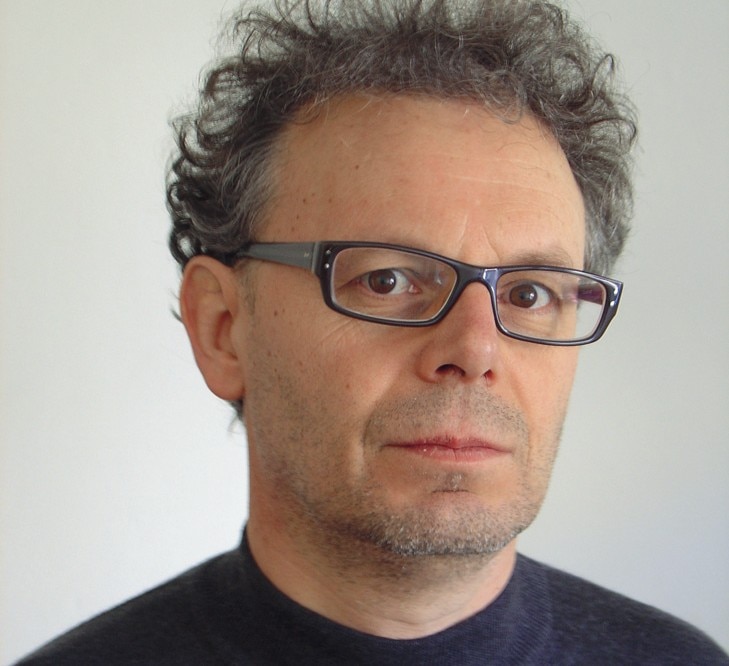
Niedermayr lives in Bolzano, Italy, where he was born in 1952. His photographs have alternated between Alpine landscapes, architectural structures, and the confined quarters of prisons and hospitals. Among his monographs: Walter Niedermayr TAV (Schlebrügge, 2006); Walter Niedermayr / SANAA (Hatje Cantz, 2007). His work is shown regularly in international galleries and is a frequent contributer on Domus.


